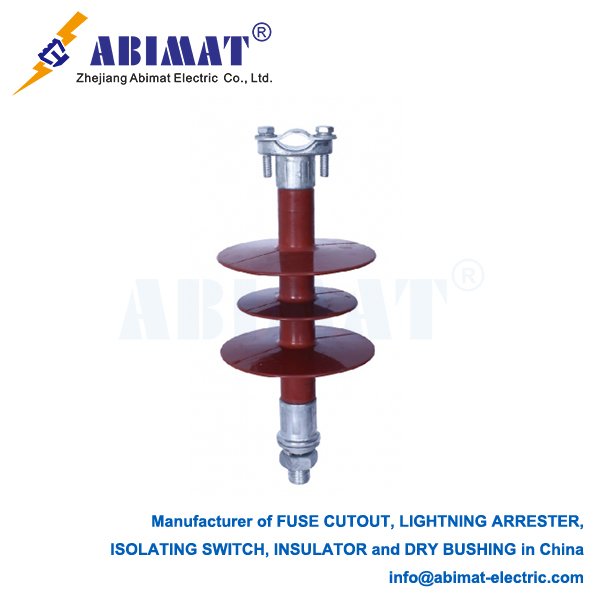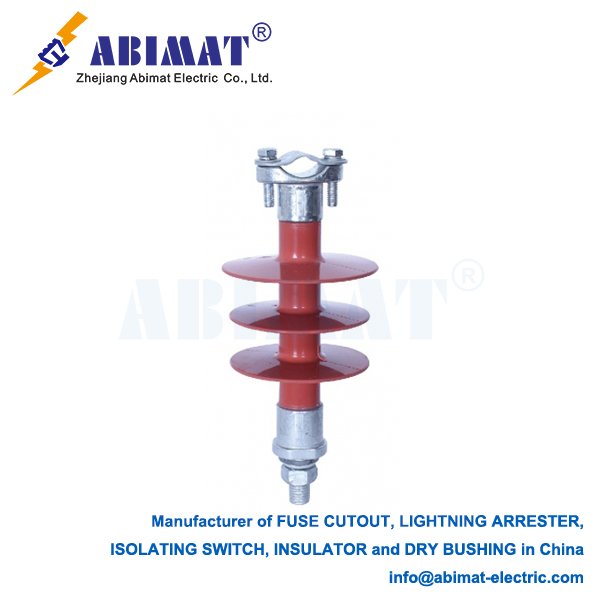Composite Insulator Materials: Performance Through Design
Composite (polymeric) insulators are essential components in modern high-voltage (HV) and extra-high-voltage (EHV) transmission and distribution systems. Their superior performance stems from the strategic combination of specialized materials:

I. Load-Bearing Core:
Material: Tensioned E-glass or R-glass fibers embedded in a thermosetting resin matrix (epoxy or vinyl ester).
Function: Provides high tensile strength and mechanical support. The resin protects fibers from moisture and chemicals, ensuring long-term integrity and a non-brittle failure mode.
Key Advantage: High strength-to-weight ratio, excellent fatigue resistance.
II. Weathershed Housing:
Material: High-Temperature Vulcanized Silicone Rubber (HTV SIR) is predominant. Ethylene Propylene Diene Monomer (EPDM) is less common.
Function: Provides primary electrical insulation, controls electric field distribution, and protects the core. Shed profiles maximize creepage distance.
Critical Properties:
Hydrophobicity: Intrinsic water repellency causes moisture to bead up, significantly suppressing leakage currents and preventing uniform wet pollution layers.
Hydrophobicity Recovery: SIR transfers hydrophobic properties to pollutants and recovers hydrophobicity after wetting or surface discharge – a vital self-cleaning mechanism.
Tracking/Erosion Resistance: Exceptional ability to resist formation of permanent conductive paths under electrical stress and pollution.
UV/Ozone Resistance: Superior long-term stability against environmental degradation.
III. End Fittings:
Material: Galvanized ductile iron or forged steel.
Function: Connect the insulator mechanically to structures and conductors, transmitting loads to the core.
IV. Critical Interface:
Material/Process: Specialized adhesives/coupling agents combined with precision crimping/swaging.
Function: Creates a permanent, water-tight, high-strength bond between the fiberglass core and metal end fittings, and between the core and rubber housing. Prevents moisture ingress leading to core degradation (“brittle fracture”).
Material-Driven Advantages vs. Porcelain/Glass:
Lightweight: ~70-90% lighter, enabling easier handling, lower transportation/structural costs, and retrofitting on existing lines.
Superior Pollution Performance: Hydrophobicity and recovery drastically reduce pollution-related flashovers, minimizing maintenance (e.g., washing).
High Vandalism/Impact Resistance: Flexible rubber housing resists damage from gunfire or flying debris; core doesn’t shatter.
Enhanced Safety: Explosion-proof under internal faults (no shattering).
Excellent Creepage Efficiency: Optimized shed profiles offer more effective creepage per unit length.
Reduced Maintenance: Self-cleaning properties significantly lower lifetime costs in polluted areas.
Applications: Dominant in modern:
Long-Term Aging: Continuous monitoring of material degradation under electrical, mechanical, and environmental stress.
Critical Quality Control: Rigorous manufacturing control, especially for core impregnation, rubber vulcanization, and end-fitting interfaces, is paramount for reliability.
Specialized Inspection: Techniques like infrared thermography or UV corona cameras supplement visual checks.
Conclusion
Composite insulator materials, particularly the synergistic fiberglass core and silicone rubber housing, deliver unparalleled advantages in weight, pollution performance, safety, and durability. Their engineered material properties make them the preferred solution for reliable, efficient, and resilient power networks globally, especially in harsh environments.


